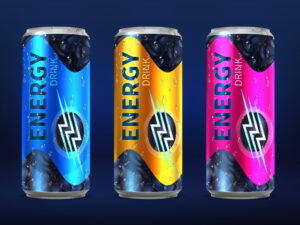Every January, gyms across the world witness a surge in activity as individuals embark on their New Year’s Resolutions to get fit with determination and high spirits. However, by February, a staggering 80 percent of these resolutions fall by the wayside. The crowded gym floors of January become sparse, and the enthusiasm fades away. But fear not! This year, I came up with a key to for you to break the cycle that does not involve shilling out 2K for a piece of equipment that will eventually be a clothes hanger.
You may have heard of SMART Goals – SMART is an acronym for specific, measurable, achievable, realistic, and time bound goals. This is a good article to learn more about the framework.
But you probably come from a business world with so many acronyms, this one seems a little too long and hard to remember (trust me, I have to look it up every time.
Introducing TGR – TANGIBLE, GRADUAL, AND REALISTIC FORMULA FOR SUCCESS
So I came up with “TGR” – TANGIBLE. GRADUAL. REALISTIC. Basically the same idea, but much simpler. Here is the video where I introduce the concept:
Now let’s break down “TGR”
T – Tangible Goals:
The key to success lies in making your fitness resolutions tangible. Vague aspirations like “get in shape” or “lose weight” lack the specificity needed for success. Instead, set concrete and measurable goals. For instance, swap “exercise more” for “stand for 2 hours a day while working.” This tangible goal not only provides clarity but also ensures you can track your progress. Similarly, committing to walking for 15 minutes a day is far more tangible than a generic resolution to “be more active.”
Examples
Below are some examples of typical resolutions and how to TGRize them.
- Not Tangible: Exercise more.
- Tangible: Stand for 2 hours a day while working.
G – Gradual Progress:
Rome wasn’t built in a day, and neither is a fit and healthy lifestyle. Gradual progress is the key to making lasting changes. Setting unrealistic expectations, such as aiming to run a marathon when you’ve never attempted a 5K, can lead to burnout and demotivation. Instead, opt for small, achievable milestones that can be built upon over time.
Examples
- Not Gradual: Run a marathon without prior running experience.
- Gradual: Start with a 5K and progressively work towards a marathon.
- Not Gradual: Give up coffee totally
- Gradual: Replace second cup of coffee with your own matcha green tea (see my recipe for only 90 kcal HERE)
R – Realistic Approach:
Resolutions that are too ambitious often set us up for failure. Instead of aiming to lose 30 pounds in a month, focus on a more realistic and sustainable goal, like shedding 1-2 pounds per week. Incorporate tools like Noom or MyFitnessPal to track your food intake and monitor progress. Realistic goals ensure that you stay motivated and don’t get discouraged.
Examples
- Not Realistic: Lose 30 pounds in a month.
- Realistic: Aim to lose 1-2 pounds per week with the help of tracking apps. Read my article below for why this is important and a few recommendations:
An Easy Way to Remember TGR - Tigger!
Remember Tigger from Winnie the Pooh? He was always so energetic and ready for anything. He would rally around everyone and make them feel good. So that's how you remember "TGR" - this positive mnemonic of the type of persona you strive to be from a fitness standpoint.

Conclusion
This year, break free from the statistic that haunts fitness resolutions. Embrace the TGR approach and turn your aspirations into attainable achievements. By making your goals Tangible, Gradual, and Realistic, you'll not only increase your chances of success but also foster a sustainable and lifelong commitment to a healthier you.
More reading
New Year's Resolutions for People with Real Jobs:






